Tom's Guide Verdict
With a unique design and impressive touch screen, the Starry Station is a router like no other, though its inconsistent performance means it remains a work in progress.
Pros
- +
Intuitive touch-screen control
- +
Good performance on the 5-GHz band
- +
Easy-to-use mobile configuration apps
- +
802.15-ZigBee integration
- +
Beautiful design
Cons
- -
Can't configure via PC, Mac or Web
- -
Limited ports
- -
Erratic behavior on the 2.4-GHz band
- -
Short range
Why you can trust Tom's Guide
The Starry Station points the way for Wi-Fi. Controlled by a touch screen to take the guesswork out of managing your network, the $300 router also boasts MU-MIMO technology for efficiently managing wireless traffic, and four independent data channels to allow more data to pass through.
While its 2.4-GHz performance was less than reliable and it lacks many of the bells and whistles of modern home networking, the Starry Station is among the easiest routers to set up and use.
Design
Kudos to the Starry Station design team for making a Wi-Fi router that doesn't look like one. Rather than the familiar curved rectangular boxes with antennas sticking out every which way, the Starry Station is shaped like a triangular prism. There's nothing to break its smooth, angular surface, and the router does without external antennas. In fact, it's so nice-looking that Starry Station deserves to be in the center of your living room, kitchen or den, not hidden in the basement.

At 7.0 x 6.3 x 3.1 inches, it's tiny compared to devices like Netgear's Nighthawk X8 and easily fits on a bookshelf, windowsill or countertop. The Starry package includes a printed setup guide, a networking cable and a power cord. Instead of using a power adapter, all you do is plug its power cord into an AC outlet; its two-prong plug will be welcome in older buildings that lack grounded outlets.
Happily, this router does without blinking LEDs. Its single white LED is so subtle that it's hardly noticeable. An oval 3.8-inch color touch screen commands your attention with its rich, vibrant look. Because that screen is flush with the Starry Station's surface, you won't need to use a stylus as you do with the Amped TAP-R2 router.
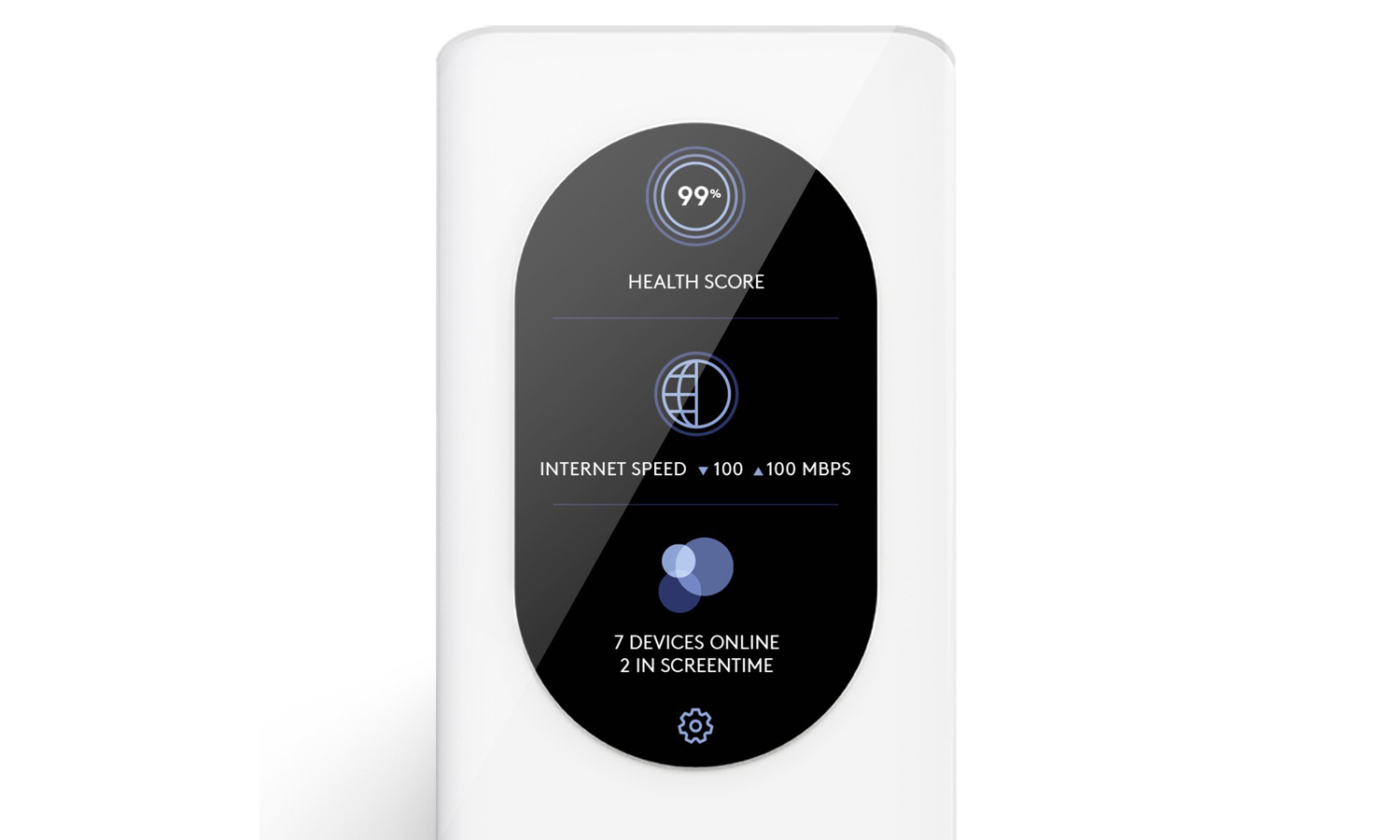
The Starry Station's main screen shows the network's health with a percentage rating — an indicator other routers don't offer. Tap on the health score, and you'll also see the number of connected devices and your Internet speed. You can tap on any of those numbers to get further details.
The touch screen lacks an explicit go-back control. You need to tap the health score to return to the previous screen, and that takes some getting used to. The screen shuts off, based on a day-night schedule, but when its proximity sensor detects motion within about 2 feet, it wakes up.
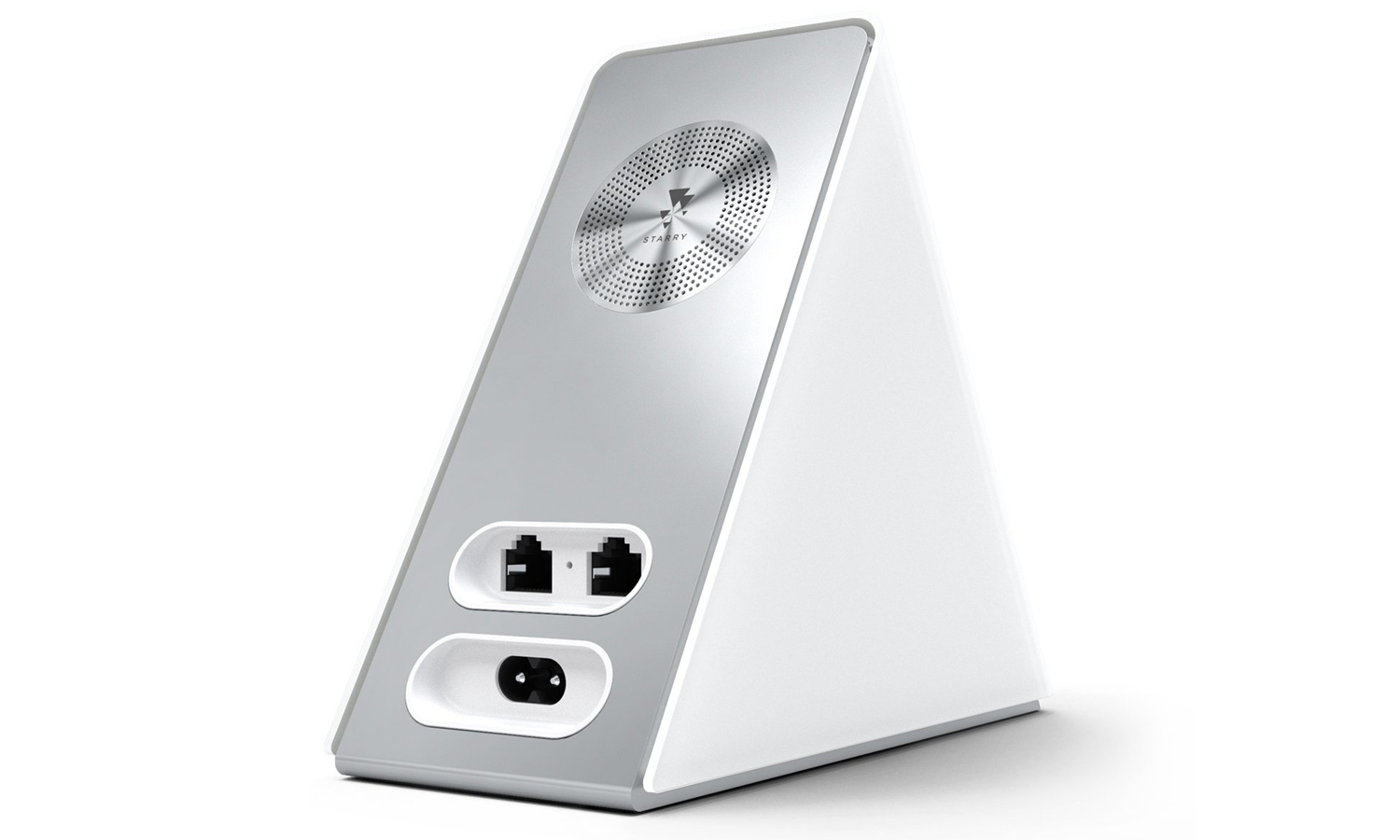
On the back of the Starry Station, you'll find a recessed reset switch as well as one RJ45 Ethernet port for your broadband modem and another for a networked appliance or a switch. While some users will lament the lack of several downstream LAN ports, it should suffice for most homes. The Starry Station worked fine with a Level One network switch, though the router lacks a USB or eSATA port for connecting LAN appliances.
Performance
The Starry Station is a 4 x 4 router capable of a peak throughput of 1.75 Gbps. It uses MU-MIMO and advanced beamforming to deliver data to many devices at once. When it's working, though, the compact router heats up, topping out at 100 degrees Fahrenheit.
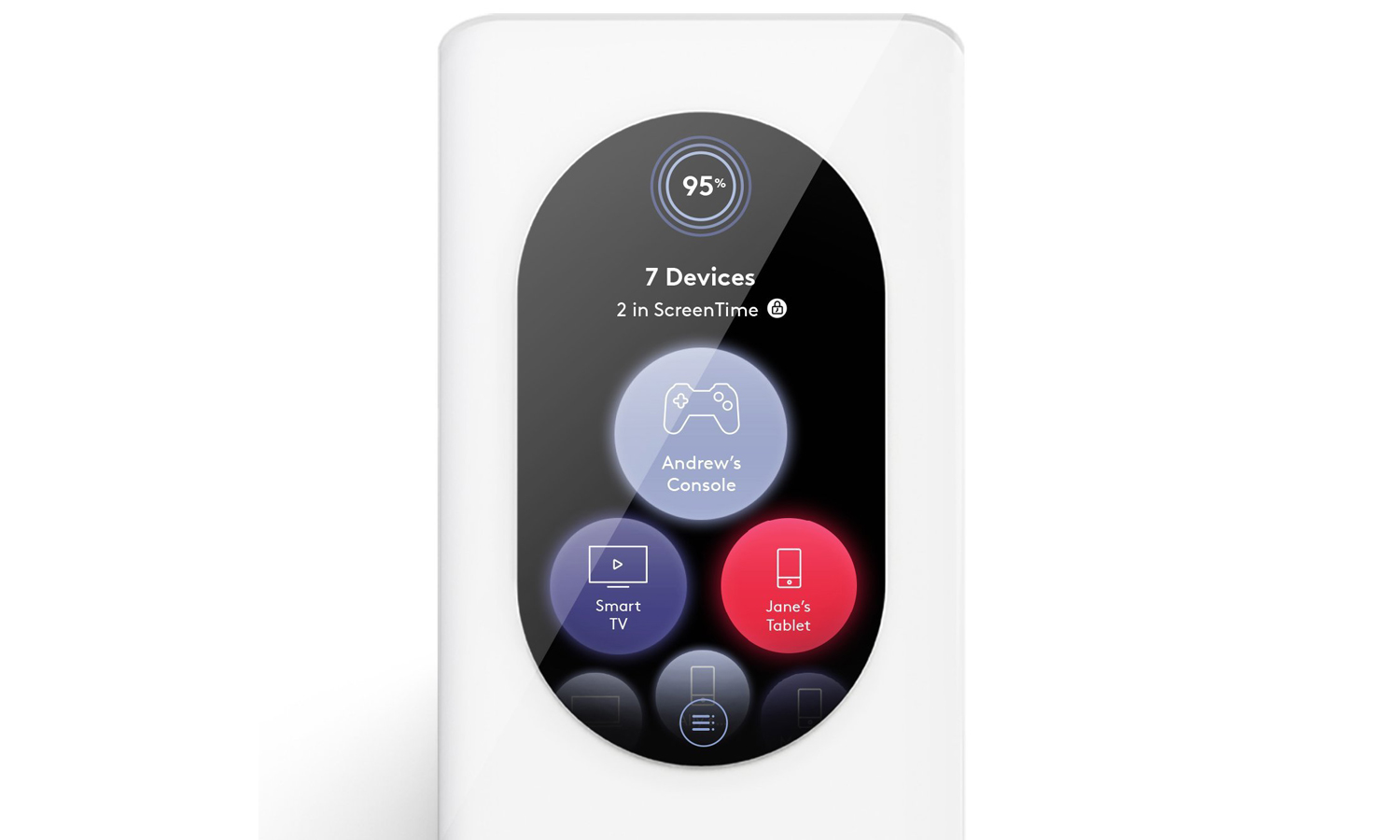
Our real-world testing using Ixia's IxChariot software in a crowded Wi-Fi environment showed the Starry Station's potential and pitfalls. The router was able to move 243.1 Mbps over its 5-GHz channel to a connected device 5 feet away. This rose to 289.5 Mbps at 140 feet, which puts the emphasis on devices located far from the router. That kind of performance puts it in the upper echelon of dual-band Wi-Fi routers and ahead of the Netgear R7000 (236 Mbps at 15 feet), but well behind the Linksys WRT1900ACS (409.2 Mbps at 5 feet).
The Starry Station disappointed in 2.4-GHz mode, though, as it acted erratically. At times, it recorded top speeds, and other times, it was barely able to move a few megabytes per second. Still, the Starry Station connected to a Microsoft Surface 3 in a suburban house with lots of thick walls. It had a range of 85 feet — well short of our average of 135 feet.
The Starry Station passed our informal saturation test, where I watched an internet video on the Surface Pro tablet while a MacBook Air streamed music from an internet radio station, an iPad played YouTube videos and a Samsung TabPro S moved data onto and off of a network storage system.
Setup, Warranty and Support
While Starry's site has lots of online resources, the router lacks a traditional manual. This will likely be a turnoff for experienced networkers who pore over them like Victorian novels.
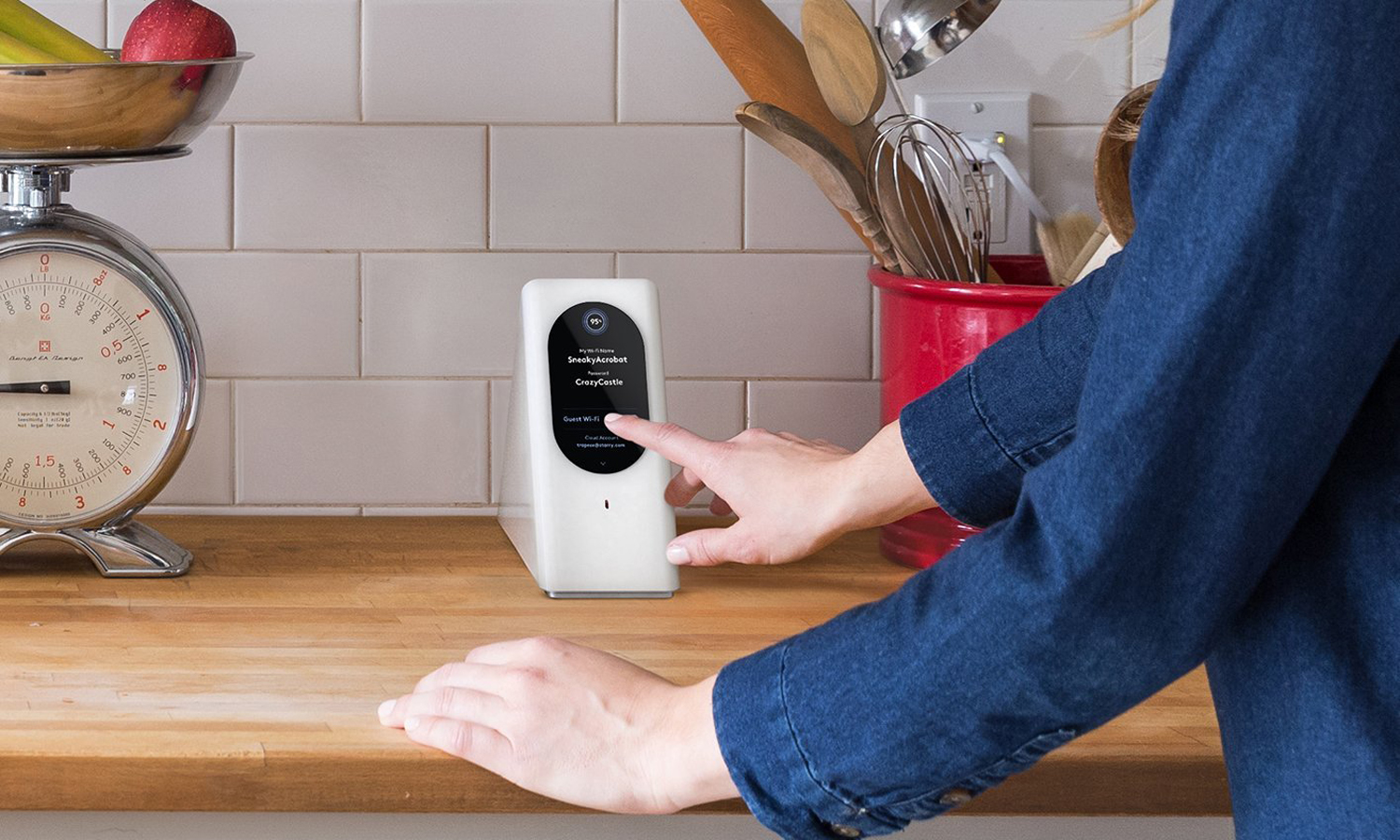
The Starry Station setup process is similar to that for the Google OnHub because you need to do most of the configuration with a mobile app. Starry's app works on either iOS or Android devices. Setup options are more limited using the router's touch screen.
Once you've created an account with Starry, the mobile app shows how to plug in and set up the router. The router comes with individual network names and passcodes, but you can personalize them or use the router's password generator. Expect to spend about 15 minutes setting it up.
Like too many routers today, the Starry Station includes a one-year warranty. This falls short of the three-year warranty that TRENDnet includes with its routers.
Customization
Optimizing the Starry Station can be a little frustrating because the mobile apps have a dark background that can make things hard to see; in addition, they run only in portrait mode. The app's main screen shows the network's Health Score at the top, followed by a fever chart of your download speed alongside how much of your bandwidth is being used. At the bottom are circles that show the devices that are connected.
Tap on the Health Score, and you'll find a series of bar graphs next to your broadband provider's name, Wi-Fi Conditions and My Devices. Tap on Health Breakdown (a dangerous notion if there ever was one), and the app shows what makes up the Health Score, from upload and download speeds to latency and signal strength.
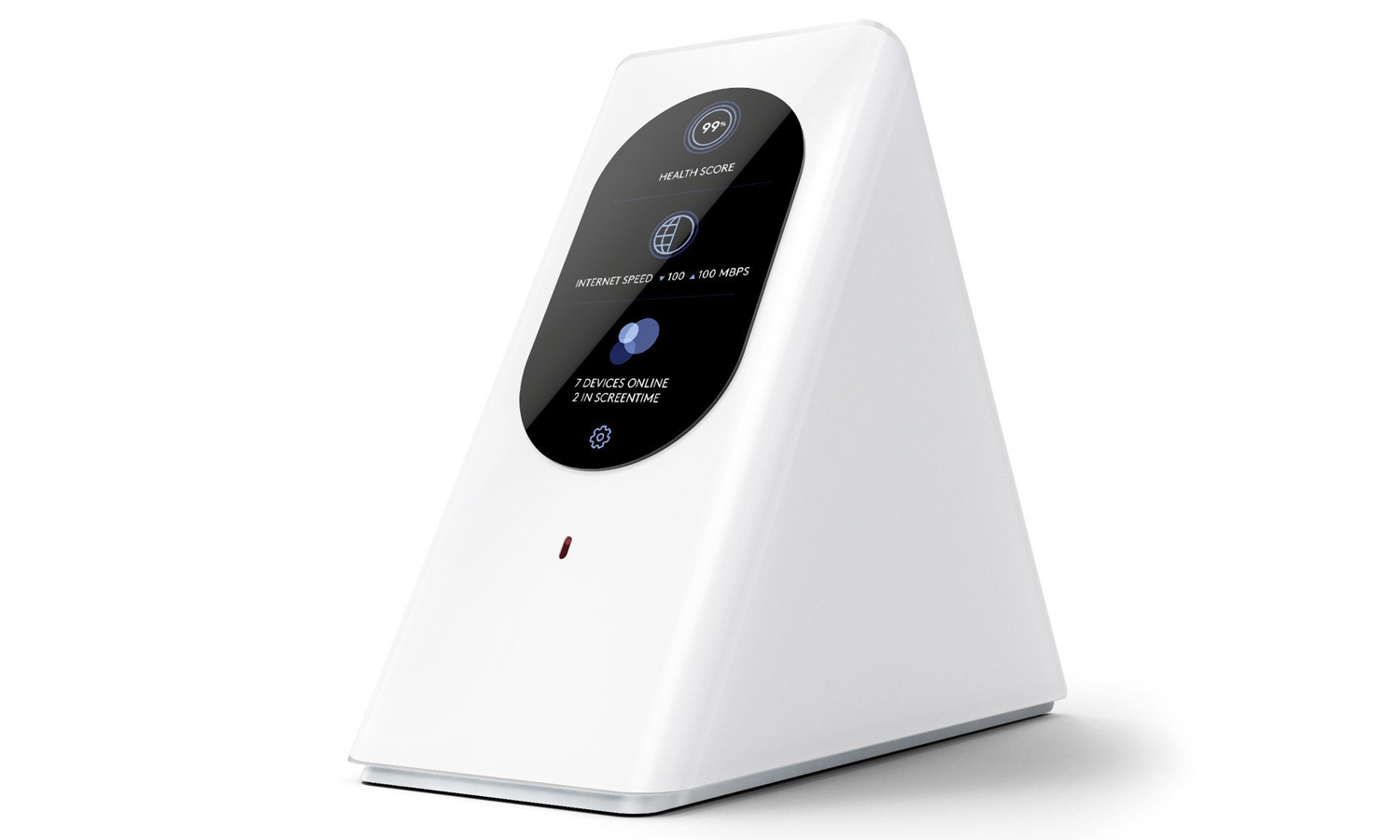
The Health Score also has a rating for Crowding, which kicks in when devices are overwhelming the available bandwidth. One downside is that the Starry Station lacks quality-of-service settings to give certain devices first dibs on data, which many routers now offer.
Tap the Settings menu in the upper-left corner of the mobile app to see the network's names, the status of the guest network and a screentime feature that can restrict the family's web access on a schedule.
Advanced Settings are skimpy. You can view your internet connection details, turn the DHCP automatic IP address server on and off, or choose your own domain-name servers. But that's about it.
The Starry Station lacks some features that are commonplace on other routers, like the ability to run IPv6 or use the router as a bridge to retransmit a Wi-Fi signal. The company says it's working on an extender. You can't adjust the transmission level to restrict the signal to your property or turn off the router's beamforming if it behaves erratically.
Security and Parental Controls
It seems that security was a bit of an afterthought for the Starry Station. For example, if you tap the router's Settings screen, it shows the network names and the password — not a good idea with strangers around.
The router allows access based on WPA-2 encryption, but you'll need to use the same password for both its 2.4- and 5-GHz networks. The Starry Station represents a break with the past by not connecting with older devices that use WEP encryption.
The router has a network address translation firewall to separate the Starry Station from the dark side of the internet, but lacks a DMZ for avoiding firewall conflicts. You can add port-forwarding rules to clear the way for games to operate at top speed.
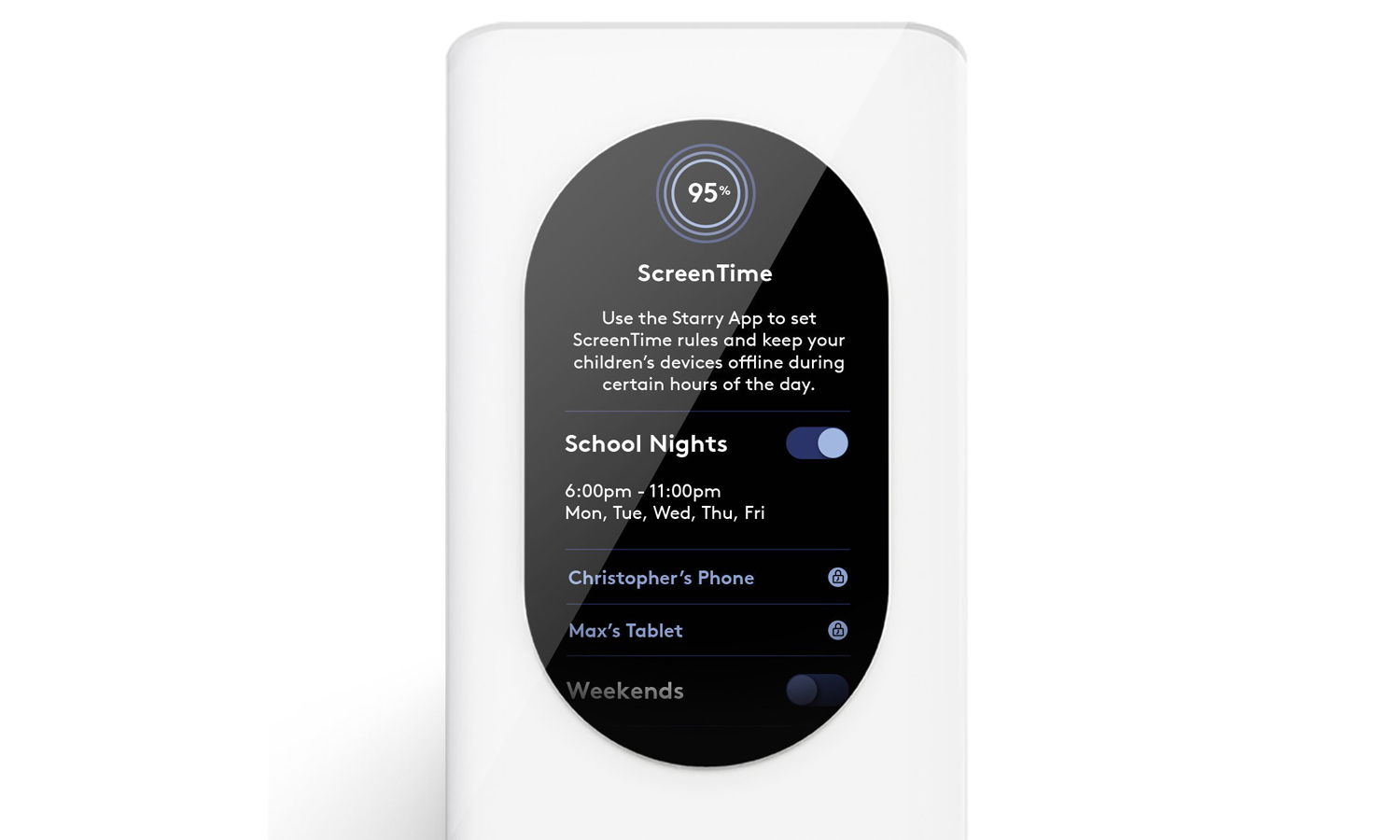
Its parental controls are some of the easiest to use, although you can't lock out specific websites or restrict a child's web journeys based on age as you can with the Luma router. Screen Time lets parents restrict web access based on a schedule. Just pick the devices you want to control, select School Nights or Weekends, and enter when you want to lock out the web for which devices.
Future Features
As a reminder that this is showing signs of a first-generation device, the Starry Station has a speaker and a microphone. Like the ones on the Google OnHub router, they don't serve a purpose yet, but in the future, they could be used for a VoIP-phone, voice control, playing music or something else. But only time will tell.

The Starry Station also fits into the internet-of-things future because, like OnHub, it has both Bluetooth and 802.15 Wi-Fi built in. While this means it could act as a server for your home automation devices, such as those that use ZigBee's protocol, you'll have to wait for the software to support that.
Bottom Line
The $300 Starry Station costs a lot, but it's worth it if you want a beautiful router that promises quick setup and at-a-glance network info on its touch screen. You're limited in the ways you can adjust the network, though, and some users may be put off by the minimal ports. Still, if you don't mind its erratic performance, the Starry Station could fit the needs of a home that values easy setup.
Brian Nadel is a freelance writer and editor who specializes in technology reporting and reviewing. He works out of the suburban New York City area and has covered topics from nuclear power plants and Wi-Fi routers to cars and tablets. The former editor-in-chief of Mobile Computing and Communications, Nadel is the recipient of the TransPacific Writing Award.

